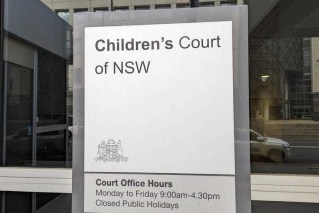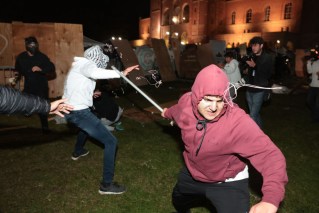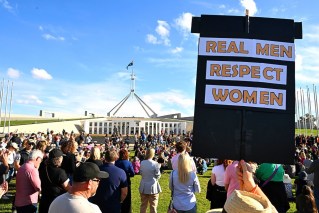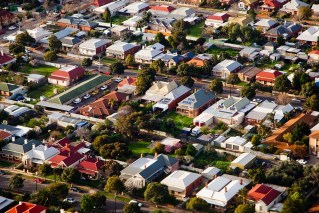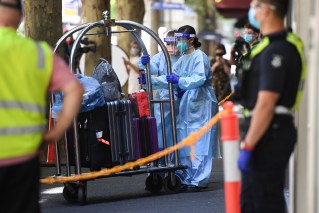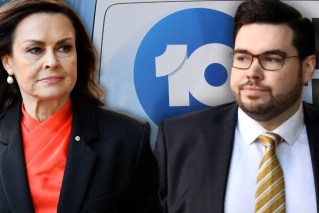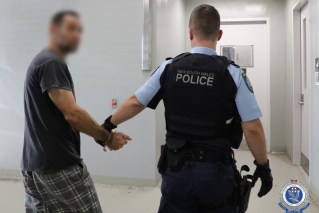The government is picking a dishonest fight on reopening targets

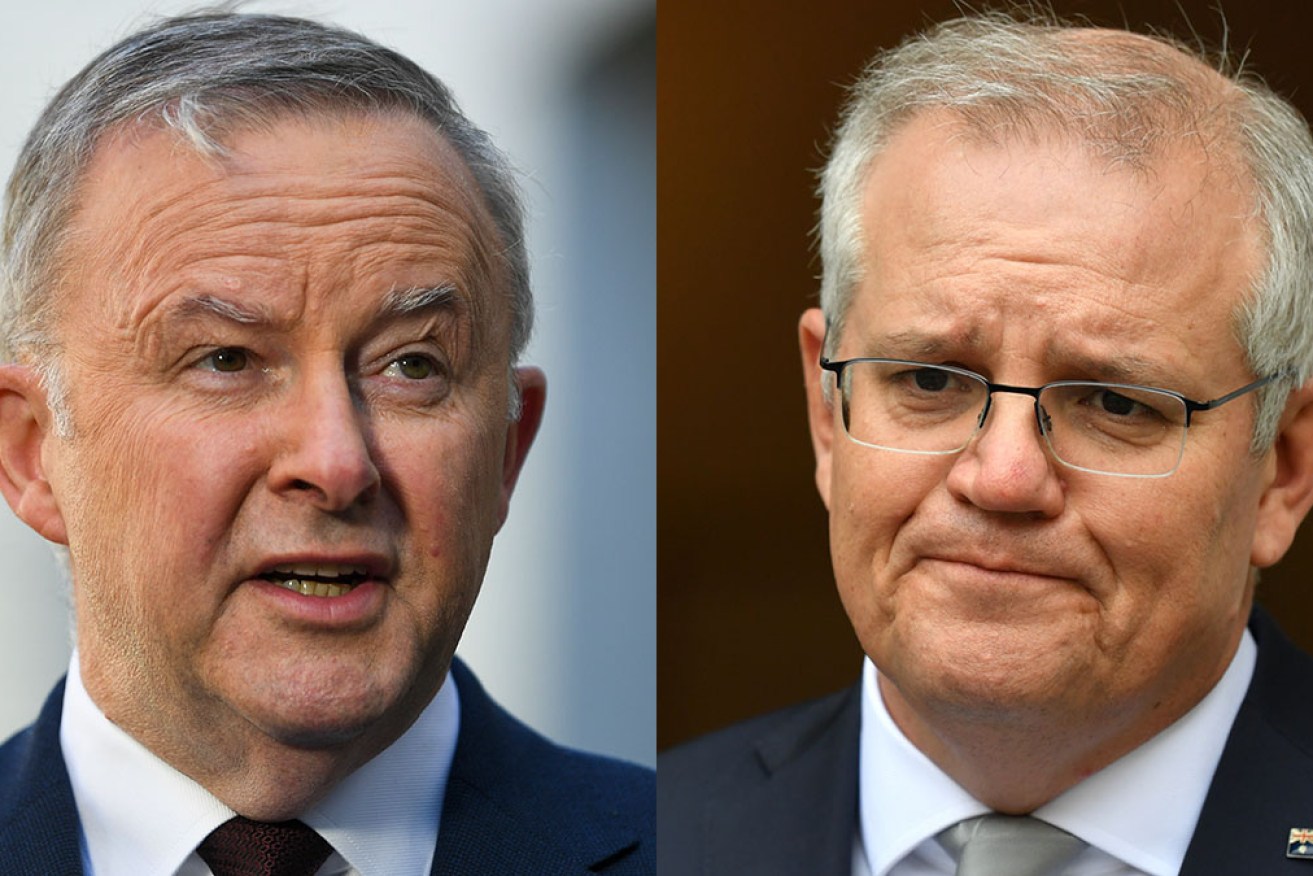
Prime Minister Scott Morrison's net satisfaction rating has plummeted in the latest Newspoll. Photos: AAP
Scott Morrison and Labor premiers are on a collision course over the national cabinet plan to reopen the economy, with federal relations worsening as the Prime Minister demands looser restrictions than state leaders are willing to allow.
The federal government has been accused of “glossing over” key details of the reopening plan and Doherty Institute modelling.
Labor premiers claim Mr Morrison and Treasurer Josh Frydenberg are presenting a simplistic, binary narrative that is underplaying the number of deaths and cases for which Australia must prepare.
“There’s all this commentary from people who obviously haven’t read the national plan,” Australian Capital Territory Chief Minister Andrew Barr said on Monday.

ACT Chief Minister Andrew Barr. Photo: AAP
The national plan has been out for weeks, but there’s a reason why Mr Morrison has only just now decided to pick a fight with state premiers.
With election season looming, and opinion polls showing Australians are weary of state lockdowns and blame them on the federal government, Mr Morrison has taken a punt on reframing the narrative.
By trying to recast himself as a champion of winding back COVID rules, he has attempted to paint premiers as lockdown-happy ‘cave dwellers’.
The Prime Minister hopes exhausted Australians will eventually rally around his flag by election day, which isn’t due until May.
But at the heart of this political strategy is a false dichotomy – that Labor premiers and federal Opposition Leader Anthony Albanese are either for the national plan or against it.
The truth is, Doherty’s modelling sets out a wide spectrum of possible ways forward, each with their own risks and rewards, which deserve robust debate on the national stage.
Not a binary choice
“If not now, when?” was the catchcry of last week, with the Prime Minister, Mr Frydenberg and Health Minister Greg Hunt all raising doubt over whether Labor would “support” the plan.
But it’s not a binary choice. It’s not an on-off switch, to be flicked between lockdowns one day and freedom day the next.
The Doherty Institute made that explicitly clear last week.
The plan provides for a range of choices and is about a balancing of risk.
Senior Labor figures publicly and privately backed the plan – indeed, they admit there was no other choice – but raised warnings.
Mr Albanese flagged concerns about whether hospital infrastructure and contact tracing systems can cope with the thousands of cases expected under even the rosiest Doherty projections.
Shadow health minister Mark Butler said children should be included in vaccine target calculations.

Mr Morrison presents the Doherty modelling. Photo: AAP
Western Australia Premier Mark McGowan said “at some point in time we’ll open the borders” but claimed doing so at 70 per cent would “deliberately infect our citizens and shut down parts of our economy”.
He called it “complete madness”.
Threading the needle on publicly supporting the plan, while raising legitimate concerns about its outcomes and making arrangements to mitigate consequences, is a difficult one.
Mr Butler found that out on Sunday, when he was quizzed on Insiders about how Labor could back the plan while saying it needed adjustments.
But the truth is, as Mr Barr said, many contributors to the debate on Doherty seem to be less than familiar with its contents.
For instance, the report doesn’t say you “have to” open at 80 per cent. It doesn’t say lockdowns have to end.
It doesn’t even recommend a specific course of action.
Instead, it offers modelling.
A mind-boggling array of different numbers and inputs – on effectiveness of contact tracing, vaccine coverage, the level of continuing ‘baseline’ health rules – spit out a range of results on cases, deaths and the need for further lockdowns.
Change one number or decision, and the whole picture changes.
For instance, altering the assumption of public health measure effectiveness from “optimal” to “partial” means the number of COVID deaths in six months after reopening at 70 per cent vaccination could go from 13 to 1457, Doherty said last week.
The presence of “light restrictions” or the effectiveness of contact tracing means the difference between needing “strict lockdown” 30 per cent of the time and zero per cent of the time.
It is not “opposing” the plan to note these numbers, or call for arrangements to better insulate the nation’s critical cogs from the impacts of deaths, cases, and as-yet-unknown lingering effects of “long COVID”.
Many options on the table
This is to make the point that the Doherty modelling presents a massive range of possible futures.
It is modelling a range of scenarios. It is not health advice of the type that chief health officers give to their political bosses.
It’s then over to politicians to choose what comes next; what level of risk will be accepted. That’s where we are now.

NSW Premier Gladys Berejiklian. Photo: AAP
Keeping ongoing light restrictions would mean a slight inconvenience for many, but lower cases and deaths; removing those restrictions could mean Australia needs to bolster its health response forever, with an ongoing rise in intensive care cases and hospitalisations.
Indeed, Gladys Berejiklian admitted New South Wales was still yet to face the biggest test of its public health system, which she predicted to come in October.
At that stage, Sydney’s cases could be high and vaccinations still shy of the 70 and 80 per cent targets.
Everyone wants to end lockdowns.
But to present this as a binary choice, as either supporting the plan or consigning the populace to endless stay-at-home orders, is to simplify an incredibly complex and important piece of scientific modelling to a soundbite.
For instance, the federal government is painting Mr McGowan reserving his right to continue lockdowns into the future, or Queensland’s Annastacia Palaszczuk declining to reopen the border to NSW, as betraying the plan.
But as Mr Barr pointed out on Monday, “the national plan doesn’t prohibit lockdowns beyond 80 per cent”.
He’s right. Instead, the national plan notes that, at 70 per cent vaccinations, lockdowns are “less likely but possible”.
At 80 per cent, the plan says Australia should have only “minimum ongoing baseline restrictions, adjusted to minimise cases without lockdowns”, and “highly targeted lockdowns only”.
“It does allow for premiers to make decisions. It’s silent when it comes to border closures,” Mr Albanese added.
Nowhere does the plan say lockdowns will never happen.
The plan also carries the key caveat that it “is based on the current situation and is subject to change if required”.
Mr Morrison has asked: “If not at 70 and 80 per cent, then when?”
It’s a fair question to ask: “If at 70 and 80 per cent, then what happens next?”

